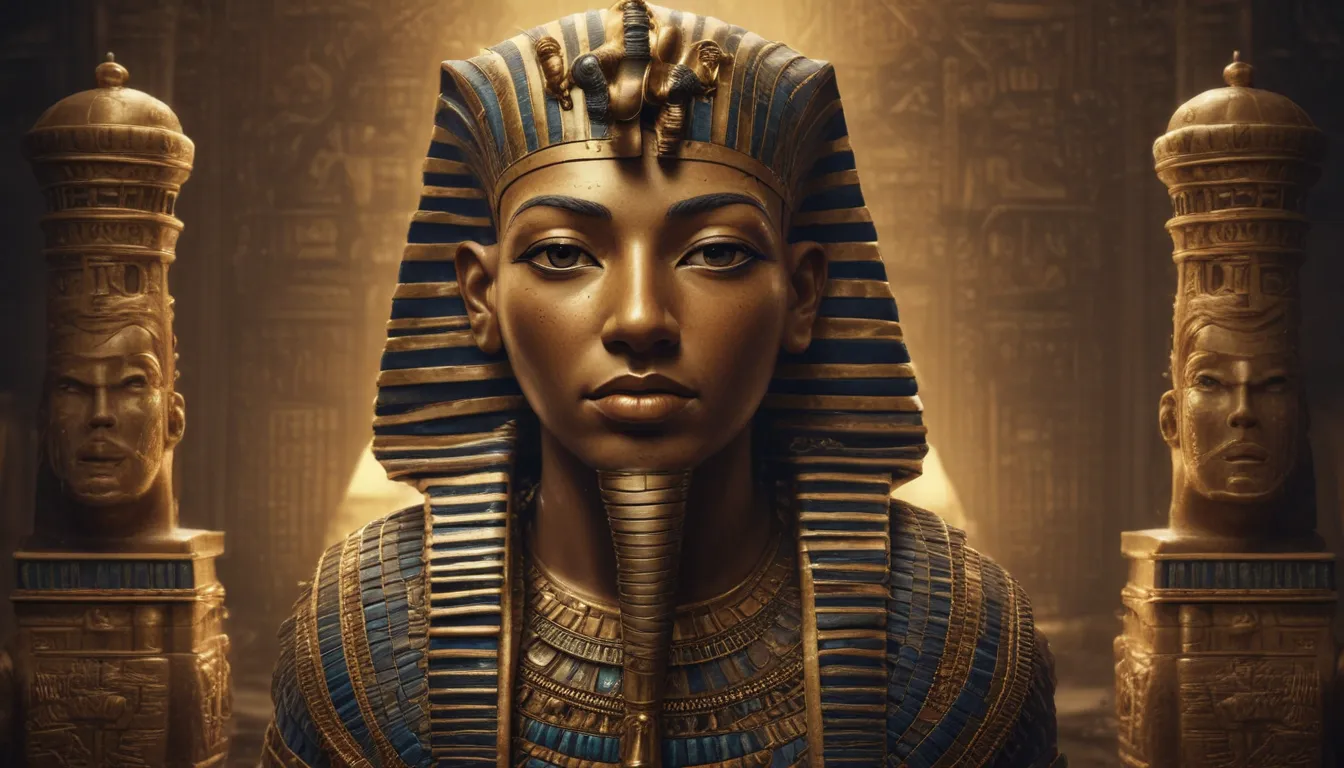The images in our articles may not match the content exactly. They are used to grab your attention, not to show the exact details in the text. The images complement the text but do not replace it.
Welcome to the intriguing world of King Tutankhamun, a young pharaoh who ruled over ancient Egypt during a tumultuous period in history. From his remarkable wealth to his mysterious demise, King Tut’s life is shrouded in myth and legend. Join us as we delve into the captivating facts surrounding this iconic figure, uncovering the secrets of his reign and unveiling the truth behind the myths.
King Tut’s Intriguing Name Change
King Tut, originally named Tutankhaten, underwent a significant name change during his reign. Born into a family that worshipped the Sun God Aten, Tutankhamun later reversed this belief and embraced the worship of the old god Amun. As a result, he changed his name to Tutankhamun, signifying his transformation into the “living image of Amun.”
The Complexities of King Tut’s Family
In ancient Egypt, intermarriage among royalty was common practice to preserve the purity of the royal bloodline. King Tut’s lineage reflects this tradition, with his mother also being his sister. This intricate familial relationship sheds light on the complexities of royal life in ancient Egypt.
The Enigmatic Rule of a Child Pharaoh
Ascending to the throne at the tender age of nine, King Tut was a mere child when he took on the responsibilities of ruling over Egypt. Supported by powerful advisers, including his chief adviser Horemheb and vizier Ay, King Tut navigated the challenges of leadership during a pivotal period in Egyptian history.
Unveiling the Astounding Wealth of King Tut
Despite his youth, King Tut’s opulent lifestyle and extravagant wealth were evident in the treasures uncovered in his tomb. From a 20-pound gold mask to over 3,500 precious articles, the riches found within his burial site offer a glimpse into the luxurious world of ancient Egyptian royalty.
Howard Carter’s Discovery of King Tut’s Tomb
In a momentous event in archaeological history, Howard Carter stumbled upon the steps leading to King Tut’s tomb in 1922. The painstaking process of uncovering the tomb revealed a wealth of artifacts, including the pharaoh’s ornate coffin and mummified remains. Carter’s discovery opened a new chapter in the study of ancient Egypt.
The Celestial Connection of King Tut’s Tomb
Constructed with meticulous precision, King Tut’s tomb aligns with the constellation Orion, symbolizing the pharaoh’s eternal connection to the afterlife. The Egyptians believed that the stars held profound significance in the journey of the soul, and King Tut’s tomb was no exception to this cosmic belief.
The Tragic End of a Young King
At the tender age of 18, King Tut met a premature demise that continues to intrigue scholars and historians to this day. While theories abound regarding the cause of his death, recent scans suggest that a broken leg may have been a contributing factor. The presence of multiple walking sticks in his tomb further underscores the possibility of a fatal injury.
The Myth of King Tut’s Pyramid
Unlike many of his predecessors, King Tut did not have a grand pyramid built in his honor due to the rushed circumstances of his burial. Instead, he was laid to rest in a smaller tomb, indicative of the hasty preparations that followed his untimely passing. Despite this, King Tut received a proper burial befitting his royal status.
Unraveling the Mystery of King Tut’s Potential Murder
Speculation surrounding King Tut’s possible murder has fueled countless investigations into the circumstances of his death. Suspects range from his wife and military commander to external enemies, each adding a layer of complexity to the enigmatic end of this young pharaoh. While evidence of head trauma exists, the exact cause of King Tut’s demise remains a subject of debate.
Legacy of the Last Ruler of a Dynasty
As the final ruler of his dynasty, King Tut left a lasting impact on ancient Egyptian history, despite his brief reign. Married to his half-sister Ankhesenpaaten, King Tut faced challenges that ultimately led to the end of his bloodline. The tragic loss of his stillborn children underscores the far-reaching consequences of royal inbreeding.
Key Artifacts and Legends of King Tut’s Legacy
From his intricate necklace with a mysterious glass amulet to his symbolic sandals adorned with drawings of enemies, King Tut’s artifacts offer a window into the symbolism and culture of ancient Egypt. Legends surrounding the curse of his tomb and the subsequent debunking of this myth add another layer of intrigue to King Tut’s enduring legacy.
Unveiling the Enigmatic Life of King Tutankhamun
As we unravel the mysteries of King Tutankhamun’s life, we gain a deeper understanding of the complexities and intrigues that surrounded this young pharaoh. From his humble beginnings as a child ruler to his opulent burial and potential murder, King Tut’s legacy continues to capture the imaginations of scholars and enthusiasts alike. Join us on a journey through ancient Egypt as we explore the life and times of one of history’s most enigmatic figures.
Explore the Wonders of King Tut’s World
Join us on a fascinating exploration of King Tutankhamun’s world, where ancient mysteries and modern discoveries collide. From his wealth and power to his untimely demise, King Tut’s legacy offers a tantalizing glimpse into the captivating world of ancient Egypt. Delve into the past and uncover the secrets of a lost civilization as we journey through the extraordinary life of the Boy King.






